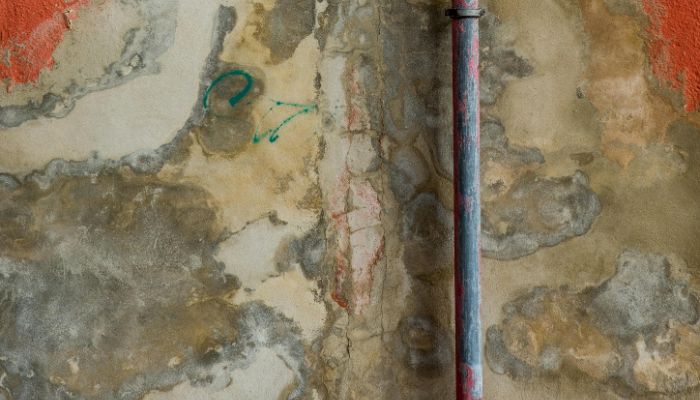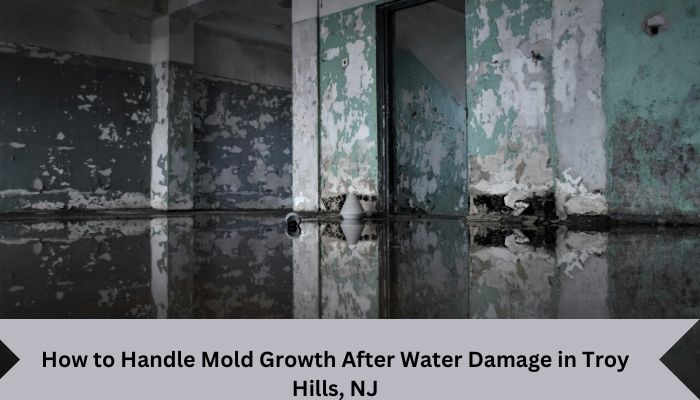Water damage in Troy Hills, NJ is one of the most common issues homeowners face, and it often leads to mold growth if not addressed promptly. In Troy Hills, NJ, with its fluctuating climate and frequent rainstorms, the risk of water damage—and consequently mold growth—is significant. Mold thrives in damp environments, making areas affected by water damage the perfect breeding ground. The presence of mold can lead to health problems, structural damage, and expensive repairs. Therefore, understanding how to handle mold growth after water damage is crucial to protecting your property and health.
Why Mold Grows After Water Damage

Mold spores are present in the air at all times. When water damage occurs, whether due to a leaky pipe, flooding, or roof leak, moisture provides the perfect environment for mold to grow. The spores need only two things to thrive: moisture and organic material, such as wood, drywall, or insulation, to feed on. Within 24 to 48 hours of exposure to water, mold can begin to develop, making rapid response essential.
In Troy Hills, NJ, where the humid climate and rainy seasons are prevalent, properties are more susceptible to water damage, leading to an increased chance of mold growth. Early detection and remediation are critical for preventing the spread of mold and minimizing potential damage.
Signs of Mold Growth After Water Damage
After a water damage incident, it’s essential to keep an eye out for signs of mold growth. The earlier you spot it, the easier it is to address. Here are some common indicators that mold might be growing in your home or business after water damage:
- Visible Mold: Mold can appear as black, green, white, or fuzzy patches on walls, ceilings, and other surfaces. It often thrives in hidden areas, such as under carpets or behind walls, so check these spots carefully.
- Musty Odor: A strong, musty smell is a telltale sign of mold growth. If you notice a damp, earthy odor in areas that have experienced water damage, mold could be present.
- Water Stains: Water stains on walls, ceilings, or floors are a clear indication of water damage, which can encourage mold growth. If left untreated, these stains can lead to mold proliferation.
- Increased Allergy Symptoms: Mold spores can cause allergic reactions such as sneezing, coughing, eye irritation, or skin rashes. If anyone in your home or business starts to experience these symptoms after water damage, mold may be the culprit.
How to Handle Mold Growth After Water Damage
If you’ve identified mold growth following water damage in Troy Hills, NJ, it’s important to act quickly and carefully to mitigate the spread. Here’s a step-by-step guide to handling mold growth:
1. Act Fast to Stop the Source of Moisture
The first step in preventing mold from spreading further is to stop the source of moisture. If the mold is caused by a leaky pipe, roof, or appliance, make sure to fix the issue immediately. This may involve shutting off the water supply, repairing leaks, or ensuring proper drainage to prevent future moisture buildup.
Once the source of moisture is stopped, it’s important to dry the area as quickly as possible. Use fans, dehumidifiers, or open windows to improve airflow and dry affected areas. In some cases, professional water damage restoration companies in Troy Hills, NJ, can help with industrial drying equipment to speed up the process.
2. Assess the Extent of the Mold Growth
Once the area is dry, you need to assess the extent of the mold growth. Small patches of mold (less than 10 square feet) may be treatable on your own, but larger infestations require professional mold remediation.
To check for mold in hidden spaces, such as behind walls or under carpeting, you may need to remove some materials or use moisture detection tools. If you can see mold or detect a musty odor in these areas, it’s essential to proceed with proper cleaning and removal.
3. Clean and Remove Mold Safely
For small mold outbreaks, you can tackle mold removal yourself, but always take precautions. Wear protective gloves, goggles, and a mask (N95 respirator) to avoid inhaling mold spores. If you’re unsure about how to remove mold safely, it’s best to hire a mold remediation professional.
Here’s how to clean moldy surfaces:
- Hard Surfaces: Clean hard surfaces like tile, glass, and metal with soap and water. Use a mixture of 1 cup of bleach to 1 gallon of water for disinfecting. Scrub the moldy areas thoroughly and allow them to dry completely.
- Porous Materials: Porous materials like drywall, insulation, or carpet can absorb moisture and mold. If these materials are severely damaged, it’s best to remove and replace them. In some cases, professional remediation is necessary to avoid cross-contamination of mold spores to other areas of the home.
- Non-Porous Surfaces: For non-porous surfaces like plastic, laminate, or glass, use a cleaning solution to scrub away the mold. Avoid using a brush that will spread spores into the air.
4. Address Potential Mold Spreading
When dealing with mold, it’s crucial to take measures to prevent it from spreading to other areas of your home. Seal off the affected area with plastic sheeting, use negative air pressure (for larger infestations), and avoid spreading mold spores while cleaning. After cleaning, dispose of any contaminated materials (rags, brushes) in sealed bags.
5. Prevent Future Mold Growth
Once the mold is removed, take steps to ensure that it doesn’t return. Here are some ways to prevent mold growth in the future:
- Control Humidity: Maintain indoor humidity levels below 60% by using dehumidifiers or air conditioners, particularly in basements and bathrooms where moisture is often a problem.
- Fix Leaks: Repair any leaks in plumbing, roofing, or windows promptly to prevent water from infiltrating your property.
- Improve Ventilation: Proper ventilation is key in preventing mold. Ensure that areas like kitchens, bathrooms, and laundry rooms are well-ventilated to reduce moisture accumulation.
When to Call a Professional Mold Remediation Service
If you have extensive mold growth or if mold has affected hidden areas of your property, such as HVAC systems or crawl spaces, it’s best to call a professional mold remediation service. Mold removal experts in Troy Hills, NJ, have the right equipment, experience, and expertise to safely remove mold and restore your property.
Conclusion
Mold growth after water damage in Troy Hills, NJ, can be a serious issue, but with quick action and proper techniques, you can effectively handle it. Stopping the source of moisture, assessing the damage, cleaning safely, and taking preventative steps can help you control mold and restore your home or business. If the mold problem is large or severe, don’t hesitate to call a professional restoration company to ensure thorough and safe mold removal.
By addressing mold growth promptly, you can protect your property, health, and peace of mind.




 PuroClean of Morristown
PuroClean of Morristown